The Osprey Comeback
Osprey populations were decimated from the 1950’s to the 1970’s resulting primarily from the widespread use of a persistent insecticide, known as DDT. There were regions in the United States where 90 percent or more of the breeding pairs disappeared. Over 500 osprey nests were present in New Jersey prior to the effects of DDT. By 1974 only 50 nests remained in New Jersey.
The osprey has become the symbol of how nature can recover from environmental atrocities. DDT was banned in New Jersey in 1968 and banned almost entirely in the United States by 1972. Recovery of the osprey populations began once these bans were implemented.
The mechanism of toxicity resulting from DDT to predatory birds, like the osprey, is quite complex that ultimately affects their reproductive success. DDT is a persistent organic pollutant that tends to concentrate as it moves through the food chain. Fish that could be contaminated with DDT from eating shrimp or crabs would further magnify the concentration of DDT in predatory birds, like the osprey. The accumulation of DDT and its metabolites in the osprey prevents calcium metabolism causing the thinning of the eggshells. As a result of the eggshell thinning, the osprey would crush the eggs when sitting on them during incubation.
The 1962 landmark book “Silent Spring” authored by Rachel Carson clearly expressed how important it is to maintain a vigilance on the use of chemicals and their fate in the environment. This book is often attributed to the environmental movement that was initiated in the 1960’s.
All of the osprey images were photographed at the Edwin B. Forsythe National Wildlife Refuge located on the southern coastline of New Jersey. This refuge, situated just north of Atlantic City, NJ, encompasses 47,000 acres of coastal habitat and is an important sanctuary for a wide diversity of birds and other wildlife. A future post will present many other birds that utilize this refuge.
The osprey, also referred to as the fish hawk, has a diet that is almost entirely made-up of fish.
Ospreys have gripping pad on their feet that aids in plucking the slippery fish from the water with their long curved talons. The osprey will orient the fish head first to reduce wind direction when carrying the fish in flight. Here a flounder is being carried back to the nest.
The osprey stands between 21 to 23 inches (53 to 58 cm.) and has a wingspan of up to six feet (1.8 meters).
They do require suitable tall structures for building their nests. Platforms are often constructed to allow a suitable structure for nest building.
Osprey nests are built of sticks and lined with grasses or seaweed. The male usually fetches most of the nesting material and the female arranges it. At the Forsythe refuge there are at least eight to ten platforms for the ospreys to build their nests.
Males and females do appear similar in appearance, but there are some slight differences that can distinguish between the sexes. Males have a slimmer body and narrower wings. Also, the coloration of the breast band is either lighter or not present in the males.
Ospreys mate for life and return to the same nest year after year. They migrate back north in the Spring usually around the beginning of March.
The female typically lays three eggs and both parents help to incubate the eggs. Osprey eggs do not hatch all at once, but rather hatching is staggered in time so some siblings are older and more dominant. The pair works together to raise the young.
The young fledge at about eight weeks of age and then remain in the area of the nest for about two months.
Juvenile ospreys have buff fringes to the plumage of the upper parts, a buff tone to the underbody, and streaked feathers on its head. Juveniles also have orange pupils that turn yellow when they reach adulthood.
The adults and the juvenile ospreys will begin their southern migration by the end of August or beginning of September to their wintering grounds in Florida, the Caribbean, Central America and South America.
Ospreys are a conservation success story. Both the pesticide bans and the construction of artificial nest sites continue to allow for the comeback and growth of osprey populations.
Leave you with a quote by Rachel Carson: “The more clearly we can focus our attention on the wonders and realities of the universe about us, the less taste we shall have for destruction.”
References:
http://www.fws.gov/refuge/edwin_b_forsythe/
http://www.conservewildlefenj.org/
http://en.wikipedia.org/wiki/osprey
http://www.allaboutbirds.org/guide/osprey/id
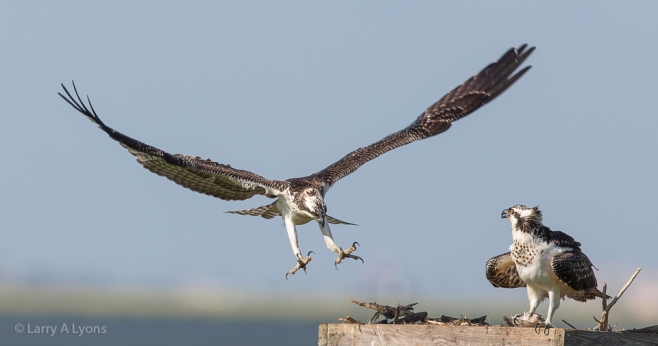

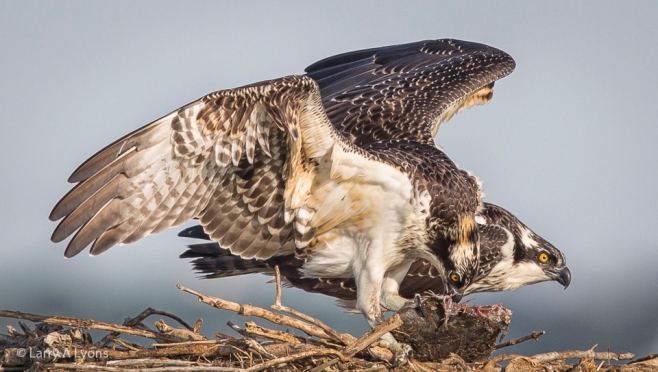
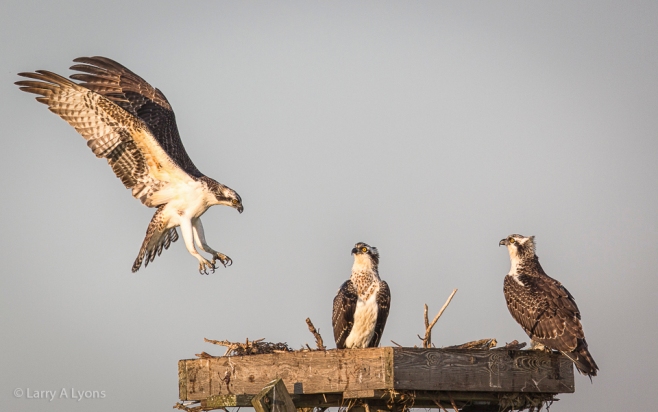
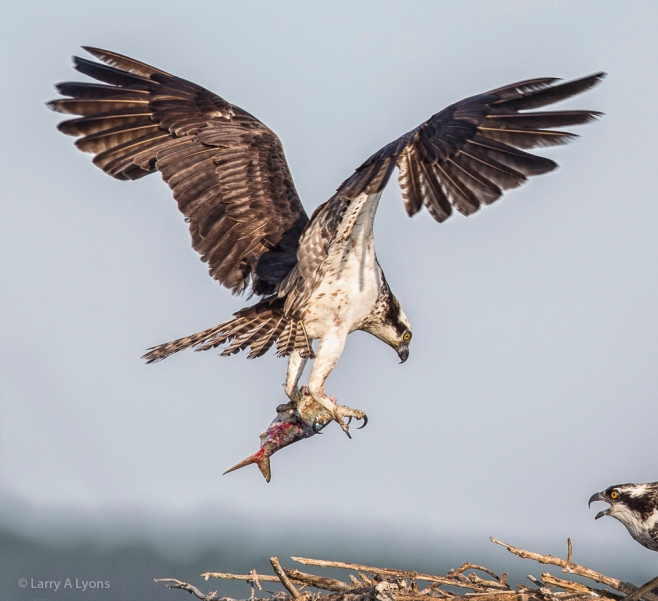
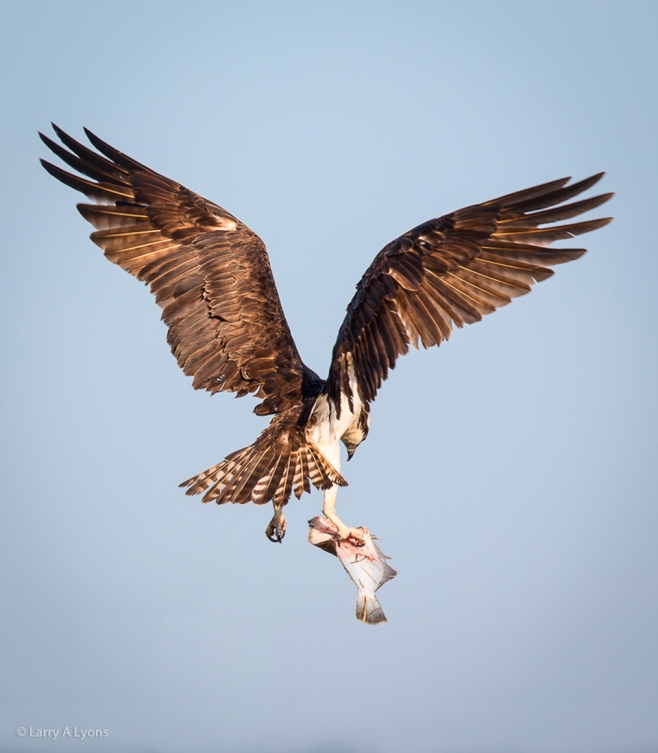
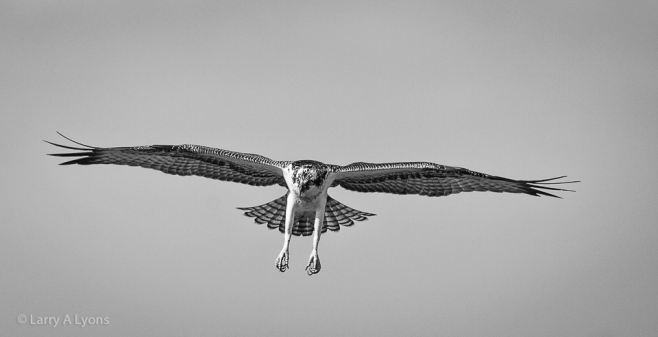

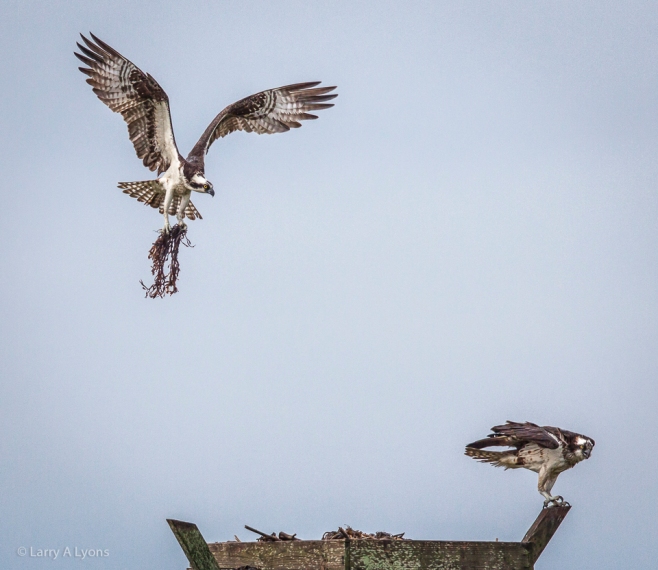
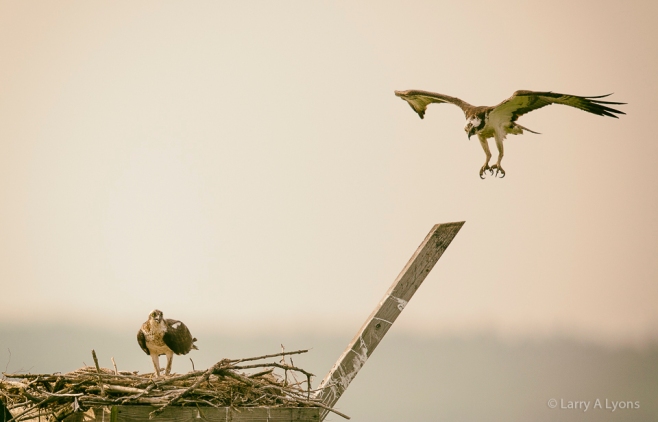

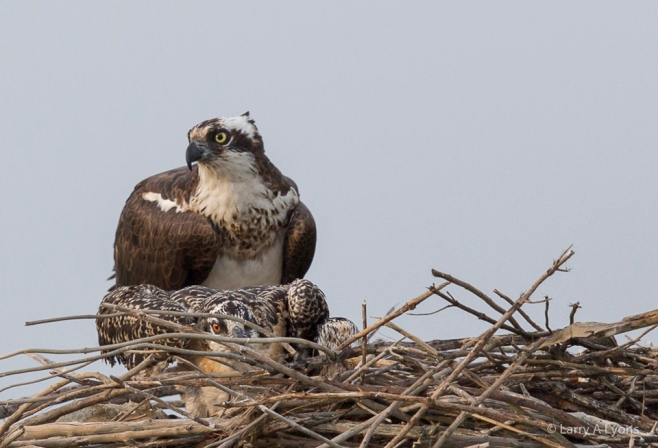
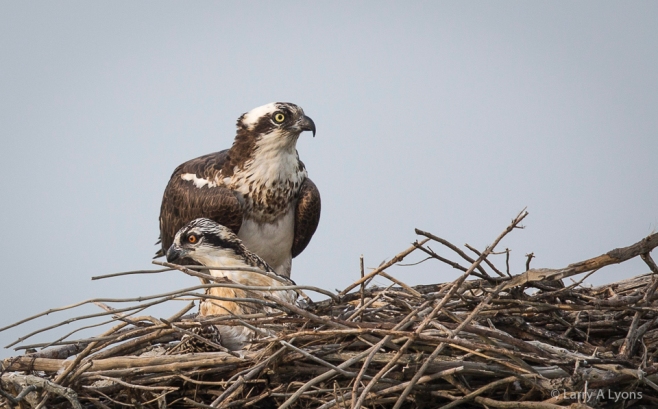
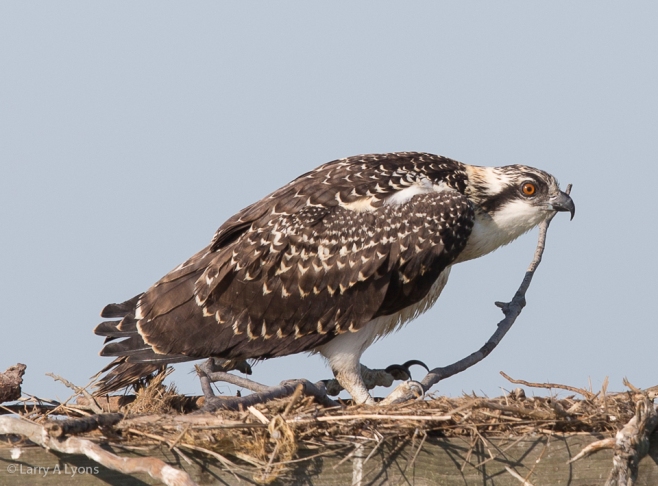

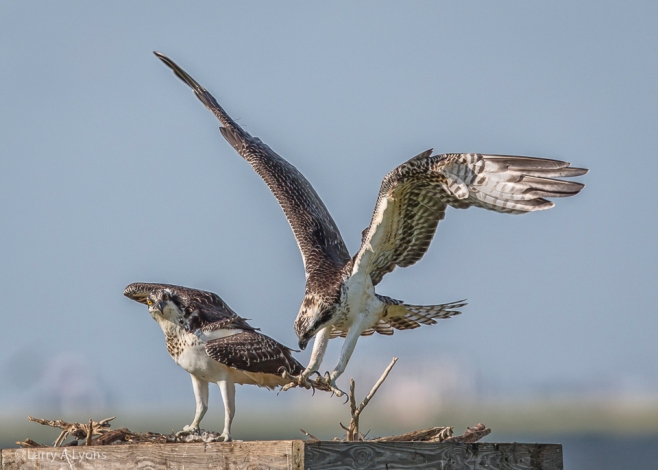
15 Responses to “The Osprey Comeback”
Great photo!
Larry, Great post, most informative. Regards, Bennett
These images are INCREDIBLE!
~Kathy
An excellent, comprehensive, informative post with some terrific images.
Wonderful shots Larry!!
Nice work Larry, as usual! What I love is how your photographs don’t just show the birds, but show what their lives are like. The last photo is particularly interesting. That osprey on the left is looking right at you. It reminds me of times when you are shooting candids and all of a sudden your subject realizes they are being photographed.
Larry,
Very informative! Awesome shots!
Barry
Thank you for sharing these very stunning pictures and great information about these amazing birds.
What a wonderful collection of images and information! Each image is unique and helps to tell the story of the osprey and why we should protect them. I love the sharpness of the birds as well as the soft backgrounds. Great job!
Great work and very insightful. Would love to know more of your techniques and equipment. Maybe you could do a workshop on your bird photography, which I feel is one of the most difficult forms of photography. Skip Vandegrift
Larry, awesome images of my favorite Raptor!! Very informative too.
Great information Larry. Wonderful images.
Larry What a great series and pictures….Certainly a trip to the area is waranted…Thanks for sharing
Ken
[…] DDT was finally banned in 1972, recovery of the osprey population began. A previous post entitled, ‘The Osprey Comeback’, provides more information about the how DDT caused the extermination of the osprey populations. […]
[…] The Osprey Comeback […]